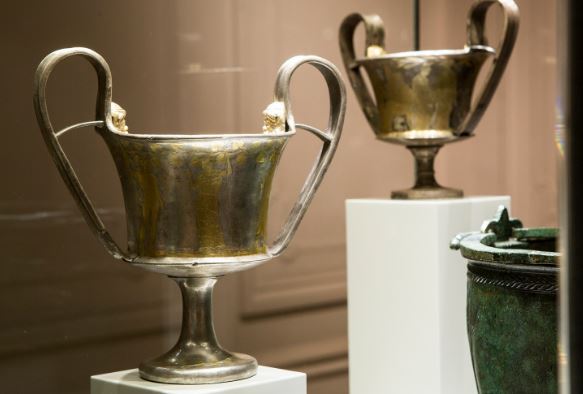Professor Tanos Sideris: This Collection competes with the Louvre Museum and the Hermitage
The first and the most important characteristic of ‘’Vasil Bojkov’s Collection” is the amazingly high quality of the artefacts which are part of the collection. The diversity of different shapes, centuries, styles, …
The first and the most important characteristic of ‘’Vasil Bojkov’s Collection” is the amazingly high quality of the artefacts which are part of the collection. The diversity of different shapes, centuries, styles of art and different cultures rank this collection together with the best collections in the world such the ‘’Metropolitan” in New York, the Hermitage in Saint Petersburg and the Louvre Museum in Paris. Professor Tanos Sideris from Thrace Foundation, who is one of the leading experts in archaeology and art history in the whole world and also a professor in the Aegean University is complete outright about the importance and the quality of this collection.
Professor Sideris is especially enchanted by a pair of golden bracelets with snake heads that are part of Vasil Bojkov`s collection. Another amazing item in the collection are the scissors with gold and silver plate which has spectacular decorations.
‘’Coming from the fact that I am a specialist in metal vases, I am highly interested in two specific types of artefacts – Thracian, Eastern and Greek rhytons and silver attics wares. Both groups include in themselves one of the best examples of such items known to humanity. They also explain to us the importance of the creation, spreading the social value that those items had in the ancient world’’, says Professor Sideris.

According to him, such collections have been the cornerstone for the creation of many of the worlds museums. Some of the biggest national museums started their collections with ‘’random artifact findings’’, which at the end of 18th Century had started to turn into museums that were opened to visitors and the general public.
‘’Private collectors are also an integral part of the creation of museums that had been established a long time ago. Such museums are developing scientific and teaching activities all over the world. Starting with ‘’Benaki Museum’’, the Museum of the Cyclades Art in Athens to the legendary ‘’Getty” in Malibu, California or ‘’Miho Museum’’ in Japan. All of these museums had the same type of setbacks connected with questions that do not have answers. First of all, I think of the ethics problems. It is not unusual to have a hard time defining the origins of the certain artifact. People run into dilemmas of whether to ignore an item with no clear evidence about its origin and to let it go to another country, or to another collector, or just to keep it in storage.
In the end, even if the collector insists only on buying artefacts from old and well-known collections than we face the financial matter of the issue. The purchase of such objects is not the only expense. In many cases, extensive restoration is needed in order to repair it from bumps and scratches due to unprofessional storage of the item. Time, effort and expert restoration is required to restore its original authentic condition. Moreover, the providing of access to the general public through permanent or temporary exhibitions is also a really expensive activity’’, explains Professor Sideris.

